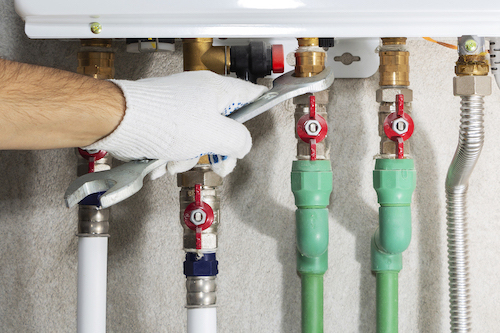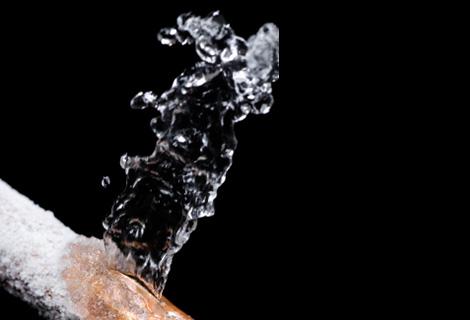From Detection to Correction: A Fast Approach to Handling Burst Pipes
From Detection to Correction: A Fast Approach to Handling Burst Pipes
Blog Article
Everybody may have their unique way of thinking with regards to How to install a dishwasher safely.

A burst pipe is a major emergency; you can only stand as you view water you pay very much to rejoin with the planet. In even worse instances, you see a swimming pool on your cooking area flooring, which is a wonderful journey threat, specifically if you have kids around. If the pipeline that ruptured was in your walls, bad news: you might require to paint that whole area.
Just how can a tragedy like a ruptured pipeline be stopped as well as handled? Well, by listening to your expert emergency plumbings and following these rules.
How do I recognize when my pipelines have burst?
Varying water stress
Pipes do not just burst in a day. You may have noticed that your cooking area faucet or shower does not run right away when you turn the faucet. It may stop for a couple of secs and then blast you with more force than usual.
In other instances, the water might appear regular in the beginning, after that decrease in stress after a couple of seconds.
Wet wall surfaces and also water spots
Before a pipe ruptureds, it will certainly leak, most times. If this relentless dripping goes unnoticed, the leak might graduate right into a large laceration in your pipe. One easy means to prevent this emergency is to look out for damp wall surfaces ad water stains. These water discolorations will certainly lead you right to the leakage.
Puddles under pipes and sinks
When a pipeline bursts, the outflow creates a puddle. It may show up that the puddle is expanding in dimension, and no matter the amount of times you mop the pool, in a couple of minutes, there's an additional one waiting to be cleaned up. Frequently, you might not be able to map the puddle to any visible pipes. This is an indicator to call a professional plumber.
Untraceable trickling noises
Pipeline bursts can happen in one of the most undesirable places, like within concrete, inside wall surfaces, or under sinks. When your home goes quiet, you might be able to hear an aggravatingly relentless dripping noise. Also after you have actually checked your shower head and kitchen area faucet, the dripping may continue.
Beloved reader, the leaking might be coming from a pipeline inside your wall surfaces. There isn't much you can do regarding that, other than tell a specialist plumber.
Turn off the Water
When water ices up, it expands in quantity by about 9 percent. As well as it expands with remarkable pressure: The stress inside pipelines might go from 40 pounds per square inch to 40,000 psi! No pipe can hold that much pressure, so it bursts. The break might take place where the ice forms, but more frequently, it takes place where water pressure finds a weak spot in the pipe. That may be inches and even feet from the icy location. Locate the water shutoff valve and also turn off the water to prevent more damage. You could also need to shut off the electrical power as well, depending upon where the leaks happens as well as exactly how huge it is.
Infected water
Many individuals think a ruptured pipeline is a one-way outlet. Quite the contrary. As water flows out of the hole or gash in your plumbing system, contaminants find their method.
Your water might be polluted from the source, so if you can, check if your water tank has any kind of troubles. However, if your alcohol consumption water is provided as well as cleansed by the city government, you ought to call your plumber right away if you see or smell anything funny in your water.
What do I do when I find a burst pipe?
Your water meter will certainly remain to run also while your water wastes. To minimize your losses, discover the primary controls as well as turn the supply off. The water mains are an above-ground framework beside your building.
How to Fix & Detect a Leaking Pipe
How Do I Know if a Pipe is Leaking?
Leak detection tests can help you determine if your pipe has a leak. Even if you don’t see an apparent leak, you should still conduct leak detection tests regularly to save water and money—and prevent major damage to your home.
Water meter. It can be helpful to figure out what your usual water meter usage numbers are and then monitor them regularly. To monitor your meter, first, turn off all water faucets in your home. Check the meter and write down the numbers. In a few hours, check the meter again. If the numbers have changed, you have a leak. Water gauge. Use a water gauge to test your water pressure. Your showerhead should produce a certain amount of water pressure based on its model and design. If the pressure is lower than it is supposed to be for that specific showerhead, your home likely has a leak. Puddles. Look inside your bathroom, laundry, and kitchen sink cabinets. Puddles around the cabinets or around toilets, tubs, showers, and washing machines indicate the presence of a leaking pipe. You may also notice loose tiles, peeling or flaking paint, or mold caused by water accumulation. Napkin test. Even if you don’t see any puddles, you may still have a leak. You can test for water leaks in the bathroom, laundry, and kitchen by wiping below-sink connections with a napkin, paper towel, or piece of toilet paper. If it becomes damp, you probably have a leaking pipe under the sink. Discolored walls. Walls that are discolored—usually with brown or yellow stains—or bulging might mean that they have been impacted by water damage caused by a leaking pipe. Smell. A leaky pipe will create sitting water, and over time, that water may develop a musty smell. If your home smells musty, but you can’t locate the source, it may be due to a leak. Steps for Fixing a Leaking Pipe
A leaky drain can be remedied by tightening the pipe base, replacing the drain seal, caulking the rim, and tightening the pipe nut. Similarly, a leaking toilet pipe can be treated by tightening the packing nut. You may also need to replace the valve. A leaky faucet may just need tightening or replacement of the washers. If that doesn’t work, consider replacing your faucet. If your pipe has a hole in it, you may want to use a pipe leak sealer or pipe leak tape. This quick fix for water pipe leaks can also temporarily fix a copper pipe leak. https://www.ahs.com/home-matters/quick-tips/how-to-tell-if-pipes-are-leaking/

I'm very curious about How to Install and Connect a New Dishwasher and I am assuming you liked our entry. For those who appreciated our blog entry kindly remember to pass it around. I praise you for your time. Come back soon.
Go Company
Report this page